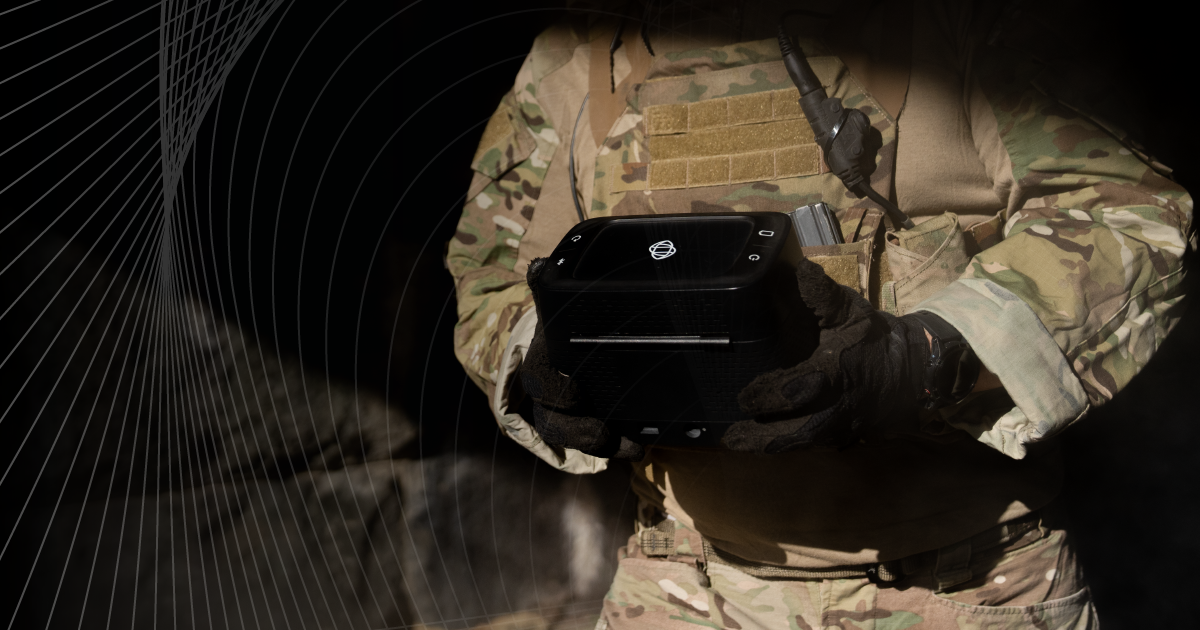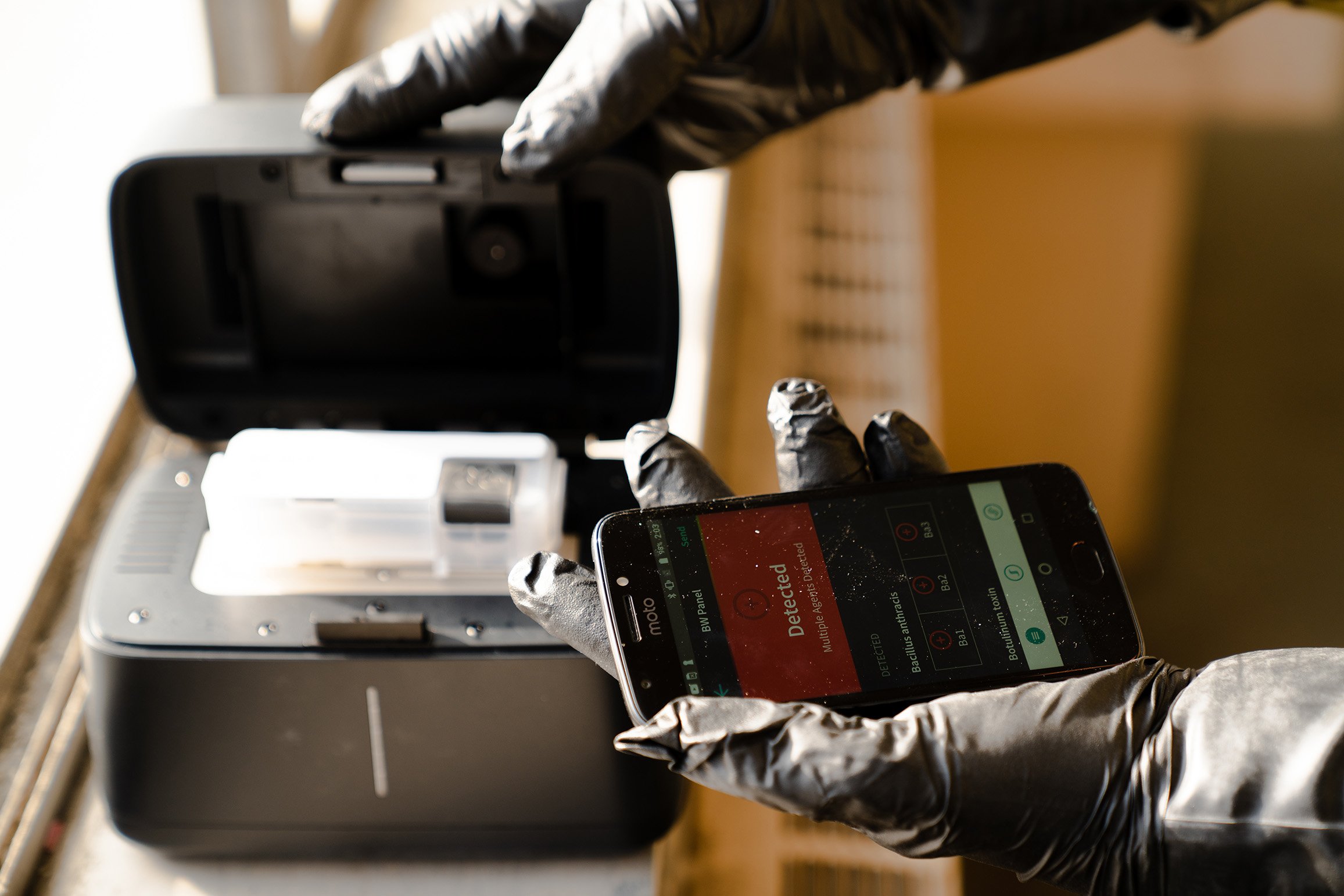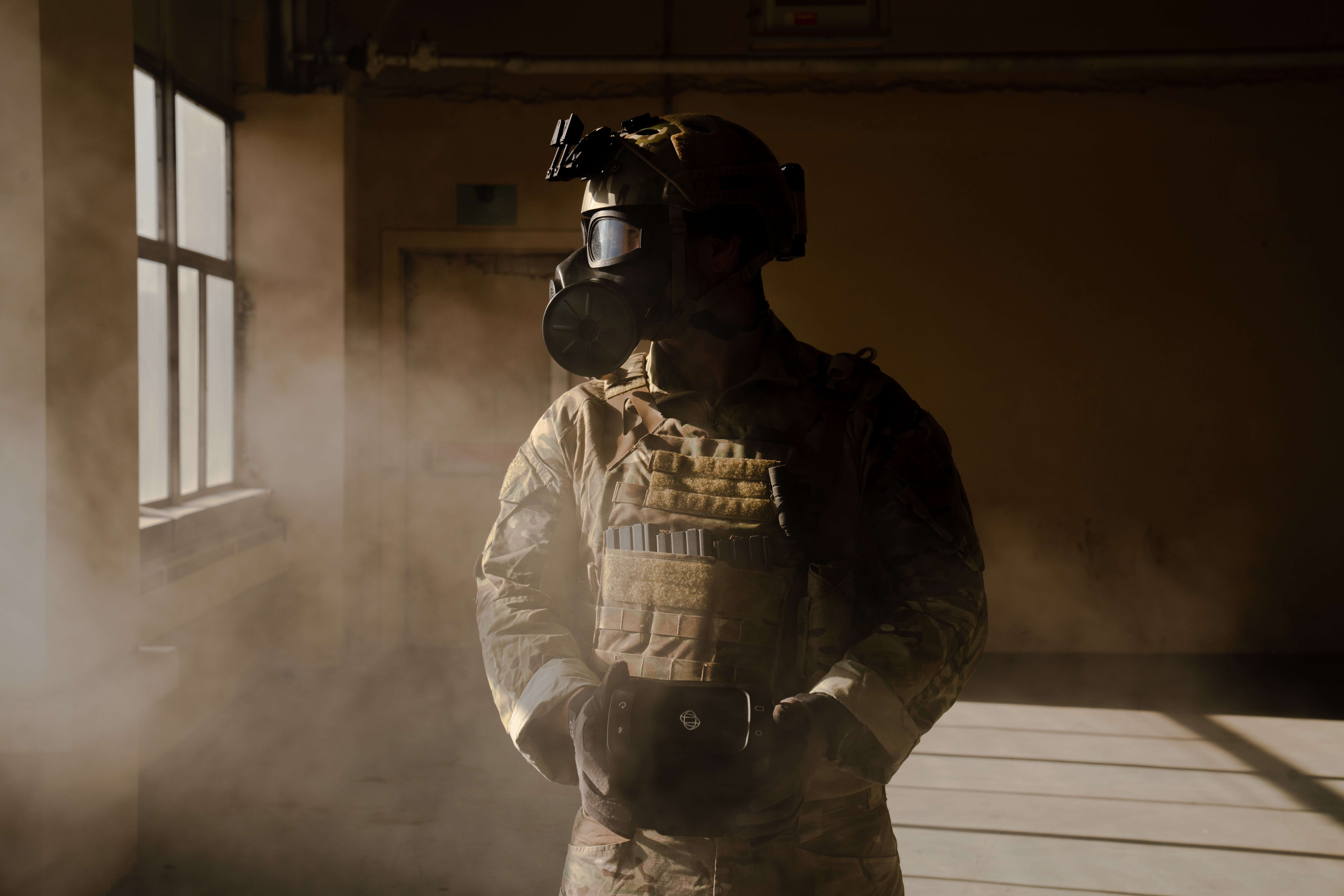
Written By: Tom Cook
The landscape of modern warfare is undergoing rapid transformation. This evolution demands preparedness not only against conventional threats but also against emerging chemical and biological hazards. In this ever-evolving scenario, safeguarding both military personnel and civilian populations from these novel dangers is paramount.
These are not the threats of tomorrow — they are the realities of today.
“After the Vietnam and Korea conflicts, the nature of warfare had primarily entailed kinetic engagements marked by bullets and explosions," explains Mike Langley, Senior Director of Federal Programs at Biomeme. “Subsequently, the focus shifted to distributed operations during Iraq and Afghanistan campaigns, where the enemy lacked the capacity for extensive bioweapon development. Instead, they resorted to utilizing existing agents such as anthrax, attainable through illegal channels. Presently, nations like China, Russia, North Korea, and Iran, classified as near-peer adversaries, possess skilled lab personnel capable of engineering hybrid viruses with potent destructive potential.”
The U.S. military has long grappled with chemical threat response, yet a critical need persists for advanced detection and response strategies against biological threats — both infectious agents and biowarfare — where technology has historically fallen short.
Biomeme is poised to change this narrative.
“Chemical weapons identification has been very fruitful in development and has been around for years because the technology has been very mature in mass spectrometry or that type of device,” says Langley, a retired Navy Corpsman who served as a combat medic in the Marines. “Getting a device that can detect viruses in real time as they come about when they're used as weapons is harder to do in the field because lab equipment has to be kept very clean, it has to be in a good environment, it's usually pretty large.”
Biomeme is helping to solve that challenge.

Biomeme first partnered with the Department of Defense eight years ago to develop and test its portable, field-ready biowarfare detection technology. That partnership began with the Joint Program Executive Office for Chemical, Biological, Radiological and Nuclear Defense (JPEO-CBRND) Special Operations Forces (SOF) team, which funded the testing and development that pushed Biomeme’s Franklin® thermocycler from 2 color channels and 3 wells to 3 color channels and 9 wells – enabling the testing of up to 27 targets with just one sample.
“Detecting infection severity, gauging antibiotic resistance, and effectively treating illnesses within the local population not only demonstrates essential humanitarian aid but also fosters goodwill within the community.”—Mike Langley
The success of that collaboration led to a partnership between Biomeme and JPM Medical that funded the testing and development of the Franklin’s fully automated ISP system, pushing the Franklin® PCR platform to an integrated sample prep (ISP) capability.
Read the JPL CBRN Special Operations Biomeme COVID-19 Test Systems Report
Over a year ago, SOF resumed the Biomeme partnership to use the ISP for biowarfare detection. They started deploying that platform in 2022 as an important step forward in their biowarfare efforts. Previously, its Joint Handheld Bio-agent Identifier program was using an aerosol collector and identifier, which was operationally unreliable. The partnership with Biomeme enabled them to switch to a handheld device. This program is approaching Milestone C, after which it could be deployed for low-rate initial production (LRIP), which would then enable the eventual transition to full-rate initial production (FRIP).
Equipping a fighting force with the ability to detect biological threats enables their success and helps to protect local populations, but that testing capability is also a critical piece of larger pandemic preparedness response posture globally.
“Environmental and vector surveillance address potential threats, whether through deliberate weaponization, efficient dispersion, or crude attempts to incite fear,” explains Biomeme CEO Max Perelman. “Groups like the Defense Threat Reduction Agency (DTRA) are also contributing to global capacity building, enabling pandemic preparedness, response, and real-time PCR-based surveillance. This ensures local expertise in safe collection and testing of vectors when threats emerge.”

The success of the partnership with the DoD has enabled these testing capabilities to be applied in commercial applications, primarily hazmat response and detection at federal, state, and local levels. Biomeme’s commercially available panel has 14 Category A and B biowarfare agents as designated by the Centers for Disease Control (CDC).
“Everything that we're doing that's benefitting the military is also going to have a huge benefit to the commercial market, which in turn helps the military market even more.”—Mike Langley
That commercial viability has obvious benefits to those partners as well as the general public, but it also benefits the DoD. “The government seeks to ensure the viability of product development investments by requiring a viable commercial application. Past experiences have made them cautious about funding products that might lead to company insolvency after a limited government purchase,” explained Langley.
With Biomeme’s products being used actively as hazmat detection capabilities around the U.S., military suppliers can be assured that these products are commercially viable and are here for the long haul.
“All those same needs that the commercial market has, the military also has in hospitals, in VA medical centers, in clinical research,” Langley says. “Everything that we're doing that's benefitting the military is also going to have a huge benefit to the commercial market, which in turn helps the military market even more, taking care of those folks after the war or between the war while they're in garrison. And so commercial viability is really important for multiple reasons.”
"It can’t be understated how critical it is to protect today’s active service members against both routine illnesses, whether symptomatic or pre-symptomatic, and emergent biowarfare threats, both of which Biomeme’s detection systems enable," says Langley.
“There were times that I [as a combat medic] started 100 or 120 IVs because everybody in the camp got foodborne illnesses at the same time,” he says. “That’s an unsustainable situation. Detecting infection severity, gauging antibiotic resistance, and effectively treating illnesses within the local population not only demonstrates essential humanitarian aid but also fosters goodwill within the community. And that goodwill goes a long, long way.”
As the DoD’s use of Biomeme’s systems continues, more data is collected and the systems are improved, enabling enhanced protection of all parties involved and even further development and improvement of these systems, offering significant long-term benefits to everyone.
“The investment that Biomeme has made in shrinking this technology down as small as possible, but still being as robust as possible in such a small footprint is a significant commitment as a company,” Langley says. “Our response to the COVID-19 pandemic demonstrated that commitment. The lessons learned from that crisis are being applied to the work Biomeme is doing now to address other infectious diseases, biowarfare detection, and pandemic preparedness. We are seeing the results of that commitment now and we will continue to benefit in the decades to come.”
Biomeme's endeavors epitomize a fusion of innovation and responsibility, a testament to the profound impact that cutting-edge technology can have on safeguarding lives, from the military to civilian spheres. The symbiotic relationship between military and commercial applications emerges as a cornerstone, ensuring viability, resilience, and collective progress in the face of dynamic threats.
Regulatory Statement: Products currently under development and not approved/cleared by the FDA.
Get the latest tips from Biomeme shipped right to your inbox

From the battlefield to the kitchen table and everywhere in between, antibiotic resistance is cropping up in—and being battled—in new and evolving ways. Antibiotic resistance (ABR) fits under the...

Overuse of antibiotics has led to a losing battle against mutating, drug-resistant bacteria. A restrained approach to antibiotic prescription will be key to addressing this massive global health...
401 North Broad St Suite 222 Philadelphia, PA 19108